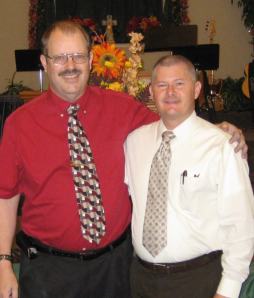I never intended to be a collaborator.
For the record, my plan was to be a wildly successful, insanely rich novelist. People were going to mention me in hushed, awestruck tones along with other “last name only” fiction writers. You know: Peretti, Dekker, Grisham, Koontz, King, Pence.
I broke into book publishing in 2001 by writing computer books. In 2003, my dream was fulfilled. I was a published—and soon to be famous—novelist. By 2005, despite excellent reviews, my “career” had pretty much ground to a halt. In fact, in May of that year I hung up my keyboard and joined the prison ministry staff of a large Dallas mega-church, feeling that my grand experiment in full-time freelance writing was a failure.
God had other plans.

In an earlier post (Oct. 1, 2011 – “You Never Know”), I told the story of how God took a single page from my out-of-print novel Blind Sight and used it to change the life of Terry Caffey, a man whose family was brutally murdered. God not only used that page to change Terry’s life; He also used it to change the entire direction of my writing.
In January of 2009, Terry asked me to help him write a book that would tell his story.
I hadn’t written or published in four years and, as I already mentioned, collaboration was not in my long-term plans. However, because I wanted to encourage Terry, I agreed to help him write a book proposal.
Because of the intense media interest in Terry’s story, Tyndale snapped up the proposal and put the book on an accelerated publication schedule. We signed a contract in March of ’09 and the book was set for a September release.
I had to write it in twelve weeks.
The accelerated writing schedule was probably a good thing because I didn’t have the time to give in to sheer panic. I’d never collaborated before, and I had no earthly idea how to go about it. But it was a door that God had opened, and so I trusted Him for the wisdom.
I dusted off my little digital voice recorder and began interviewing Terry. Then I worked at  outlining the book, selecting the stories that would go into it, even using my fiction-writing skills to lay out a plot-line.
outlining the book, selecting the stories that would go into it, even using my fiction-writing skills to lay out a plot-line.
As I worked with Terry and wrote what would become Terror by Night, I began to notice something unexpected.
I was enjoying myself immensely.
I love telling stories, but I had no idea how much I would enjoy helping other people tell their stories.
And so now I happily call myself a collaborator. Since the publication of Terror by Night, I wrote More God, the amazing story of Nate Lytle, a young surfer who made a miraculous recovery from a massive traumatic brain injury. I also collaborated with bestselling author Stephen Arterburn on a novella titled The Encounter. Soon I’ll begin writing the story of Herb Samme, a dad who lost his son in Iraq and then went there–at age 59–as a civilian contractor to finish his son’s tour and walk in his footsteps.
I never intended to be a collaborator; I wanted to write my own books.
But God led me through an unexpected door and down an unplanned path. He showed me that I can be a blessing to others by using my writing abilities to help them write their books. And in doing so, He changed the direction of my writing ministry.
Has God placed some unexpected doors or unplanned paths before you? I hope that in 2013 you’ll take a chance and go through them.
You never know what God might do.
“A person plans his course, but the Lord directs his steps” (Proverbs 16:9, NET Bible).
[Tomorrow, Dec. 13th at 3:30 p.m., Central time, James will be leading a free webinar titled “Writing with Others: The Art of Collaboration” over at The Bestseller Society. You can register for the webinar here: http://www.bestsellersociety.com/events/the-art-of-collaboration-with-james-pence/ ]










